It is the most Instagrammed mirror in history, depopulated on social in recent years as a status symbol of celebrities and influencers. On the surface vexatious and boyish, it is actually an emblem of a great revolution and the bearer of strong, nonconformist values. We are talking about the iconic Ultrafragola mirror/lamp, designed in 1970 by the Italian master of design Ettore Sottsass (Innsbruck, 1917 - Milan, 2007) for Poltronova, for which he was creative director at the time. Since its release date, now more than fifty years ago, it has never stopped being produced, thus quickly becoming, thanks to its aesthetics and history, an icon of Italian design.
It is a mirror of considerable size, 195 cm high, 100 cm wide and 13 cm deep: this makes it an imposing and highly recognizable piece of furniture. The frame recalls organic and fluid forms, evocative of an undulating feminine hair. This sinuosity is not only an aesthetic element but also a functional one because it evenly distributes light around the mirror. In fact, one of the distinctive features of theUltrafragola is the LEDlighting integrated into the thermoformed opaline PETG frame that emits a diffused pink light. The luminous effect and the curves of the frame have a visual impact that immediately catches the eye, while the light emitted by the mirror adds a warm and inviting hue to the room, creating a sense of intimacy and charm and making the space softer and more welcoming.
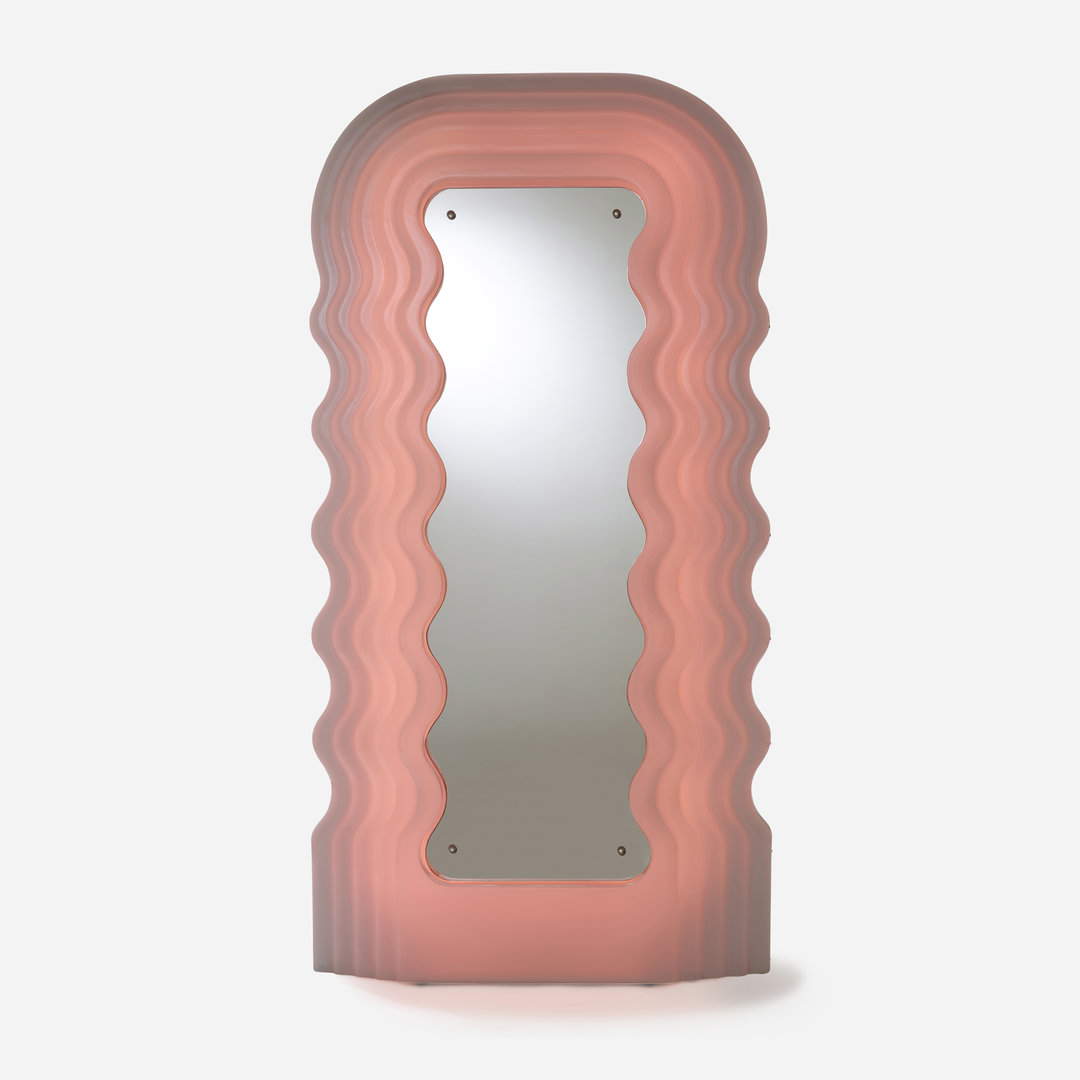
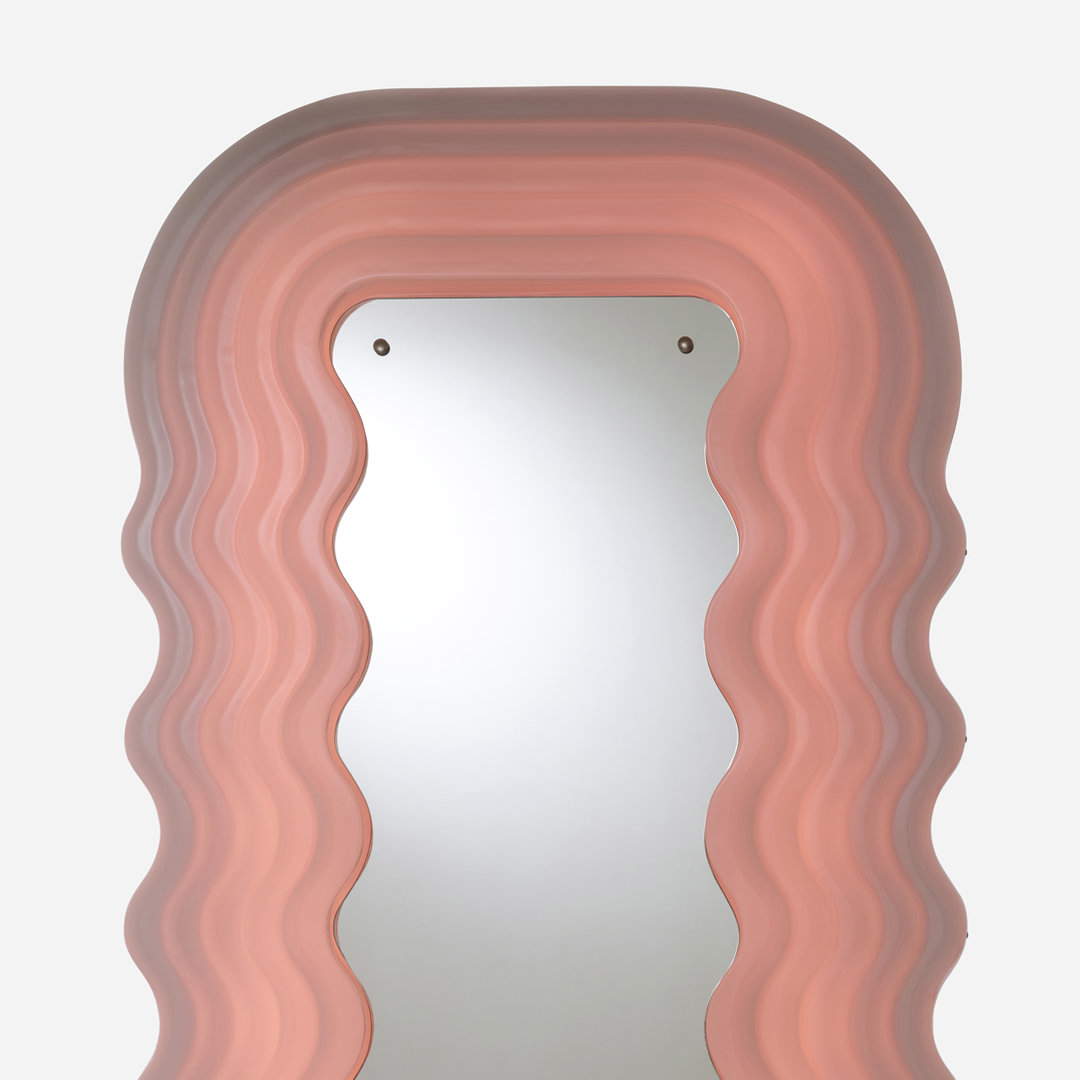
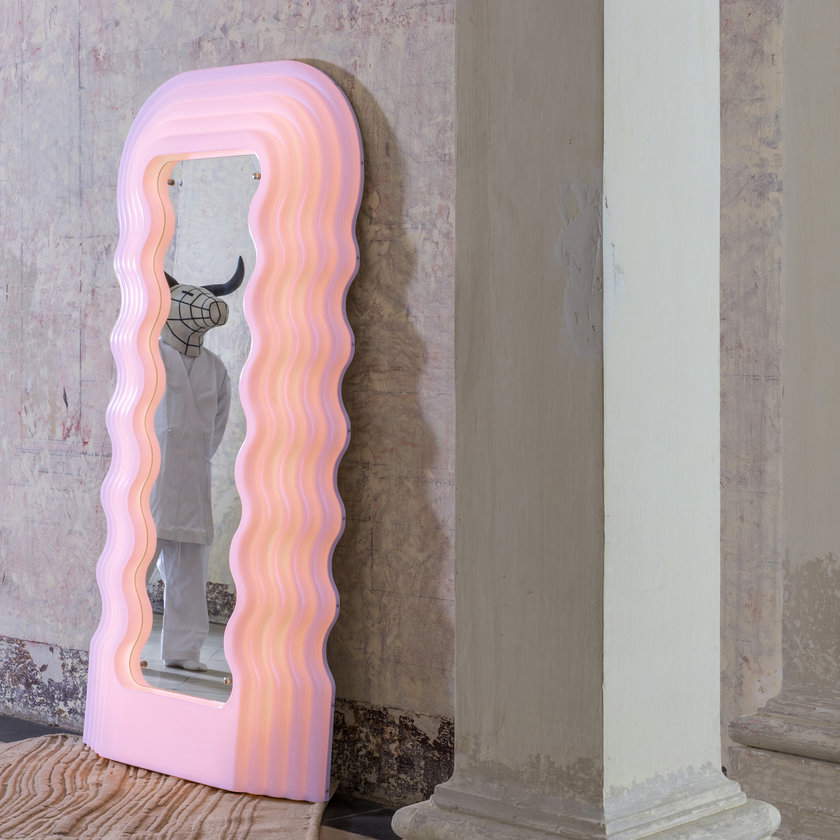
A famous line from Lewis Carroll’s Alice in Wonderland inspired the designer in the creation of this particular object: “Oh Kitty, think how beautiful it would be if we could go through the mirror! I’m sure there are beautiful things in there!” In fact, the mirror/lamp is reminiscent of a portal, with its almost two meters in height and its sinuous, eye-catching shapes. A portal that gives access to new, imaginary, ever-changing and imaginative worlds. It is no coincidence that Sottsass wanted to be inspired by this film, in which the rules of the world are completely overturned, subverted and transformed.
In fact, Sottsass was the first in Italy to express, through his creations, the emerging ideas of counter design orradical design. These movements represented a social critique expressed through objects characterized by a strong experimentalism in materials, techniques and forms, in clear opposition to the rationalist style and common taste of the time. In an era dominated by the modernist movement, known for its order, rigidity and use of straight, clean lines, the Ultrafragola mirror marked a clear break with the past. With this piece, Ettore Sottsass succeeded in synthesizing a design philosophy that celebrated the beauty of imperfection and formal diversity.
His vision of design and planning is strongly influenced by his travels in the 1950s and 1960s, in which the architect (he was in fact by training an architect) does not simply conduct experience superficially but tries as much as possible to experience these places and cultures in order to seek a new form of language and new inspirations. One of the first trips that deeply marks Sottsass is his stay in New York in 1956, where he works with the famous modernist designer George Nelson. Here he became acquainted with American society and its consumerism, appreciating the simplicity of mass-produced products but rejecting purely practical design aimed at mere production. It is precisely in this period that the designer develops his deeply anti-functionalist conception of design, creating artifacts that will become objects of escapism and carriers of poetry and messages. This new ideology also becomes increasingly defined and clear thanks to the second major trip Sottsass took to India in 1961. Here he discovers a culture rich in sensations, colors, symbols and values. Objects thus become an emotional element, capable not only of serving needs but above all of evoking feelings. The Ultrafragola mirror is emblematic of this transformation in the designer’s artistic and design style. Sinuous lines, bright colors, and innovative materials will henceforth be a manifesto against the bourgeois, rationalist, and functionalist culture of the society of the time.
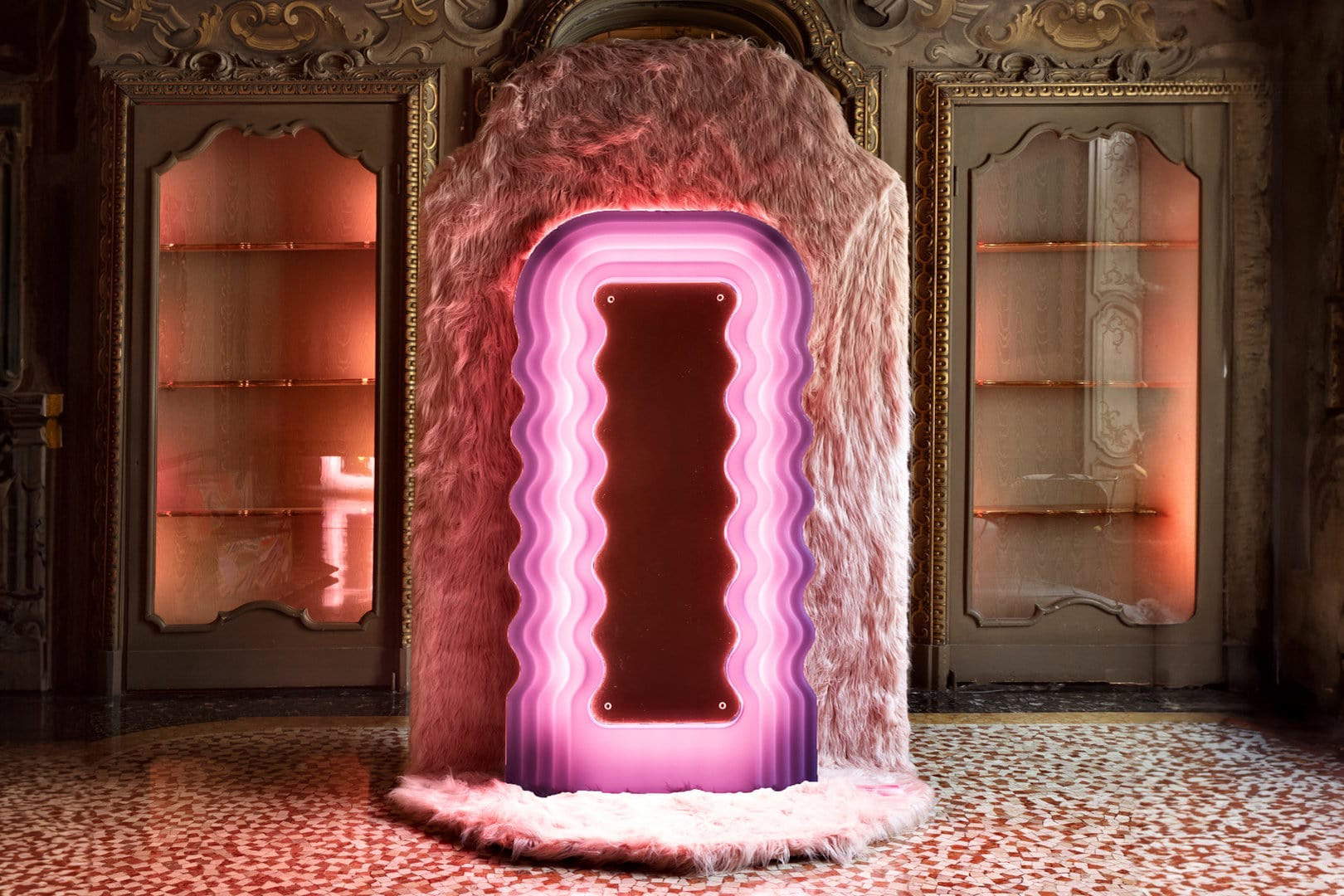
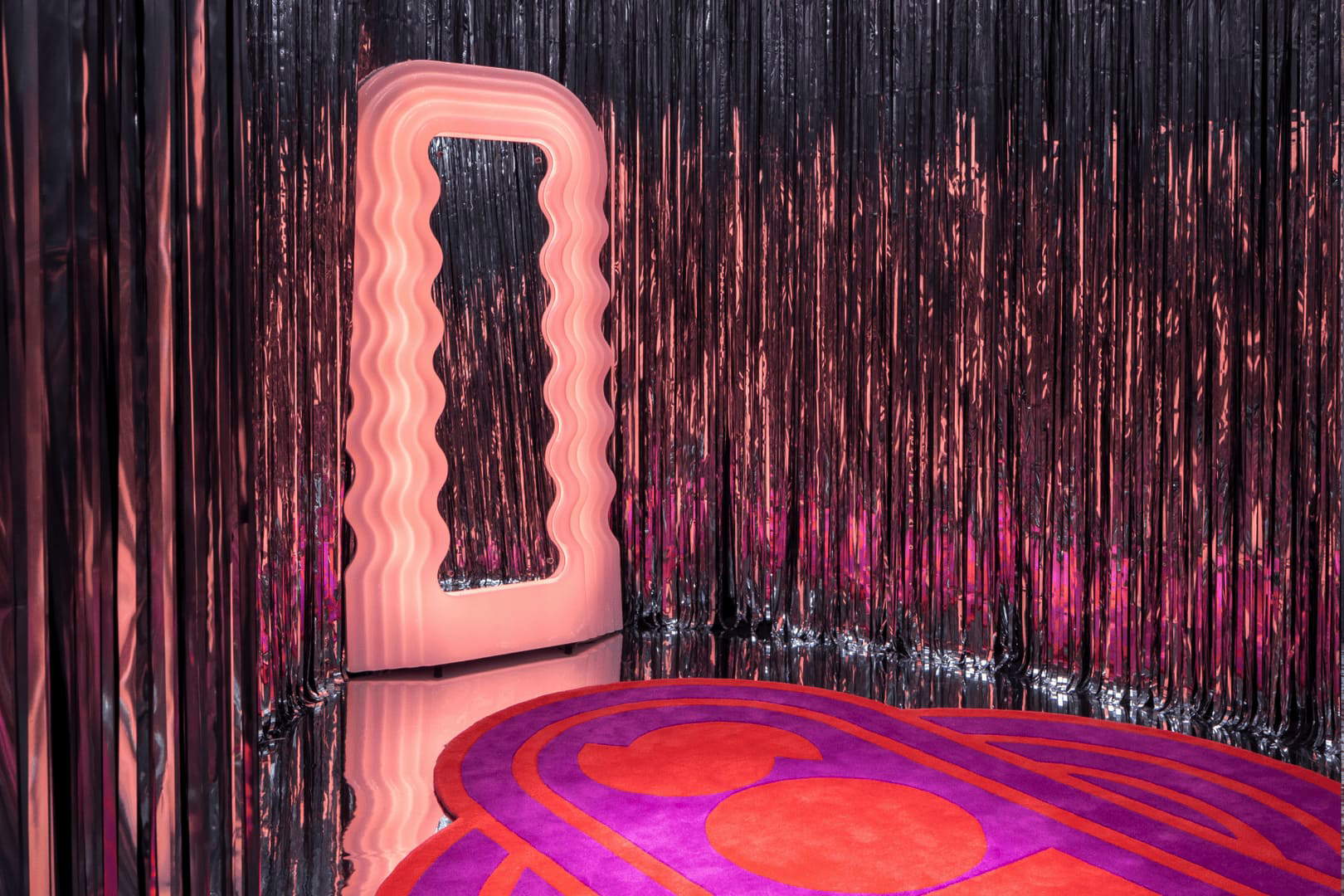
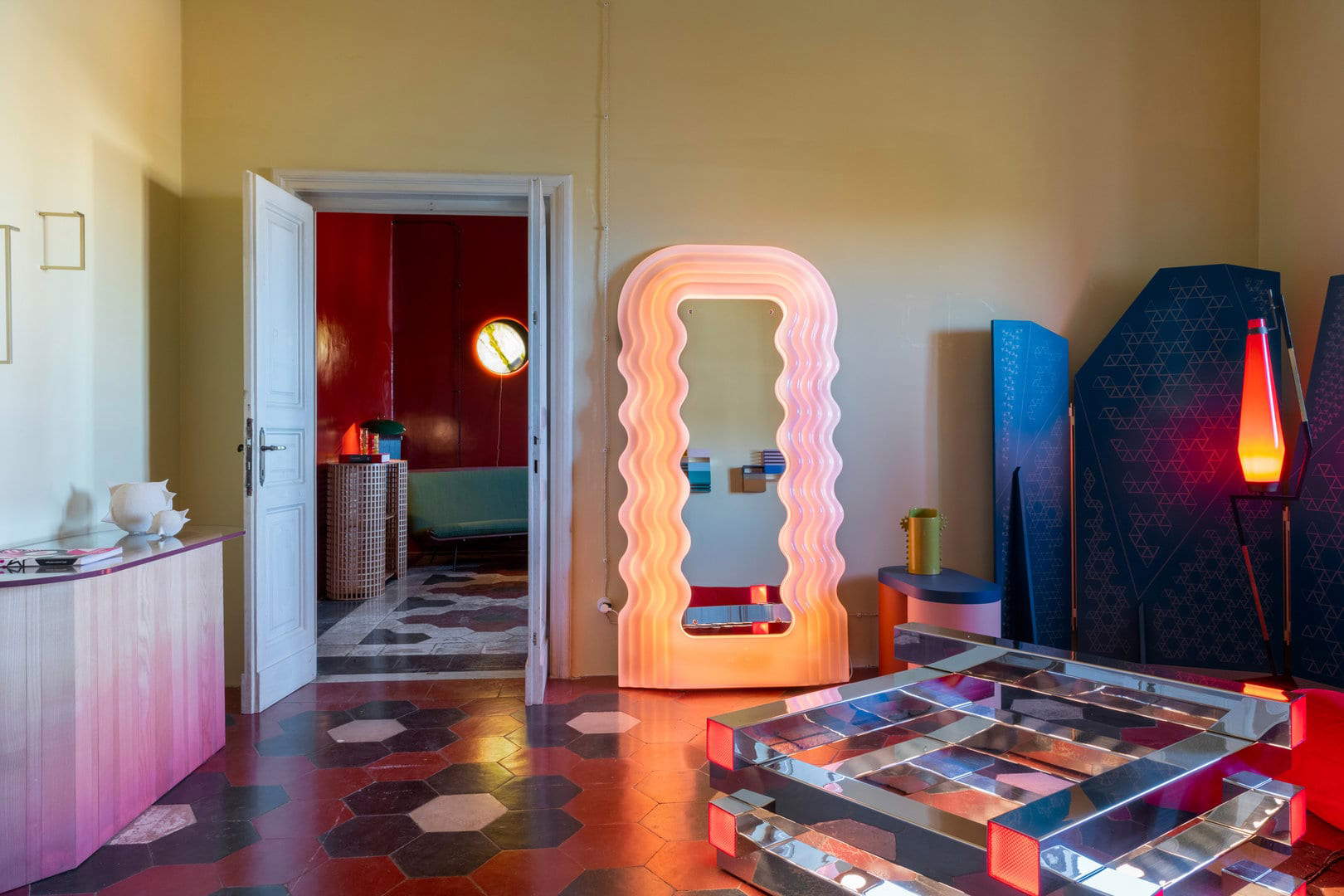
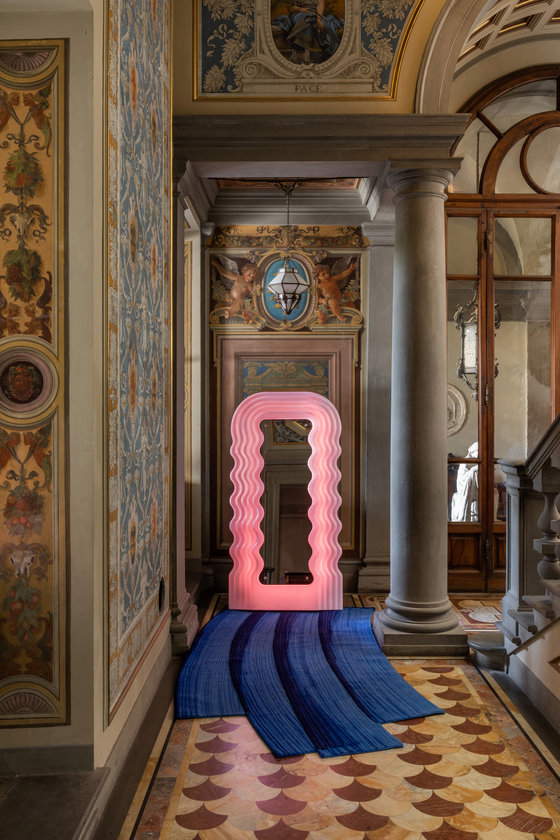
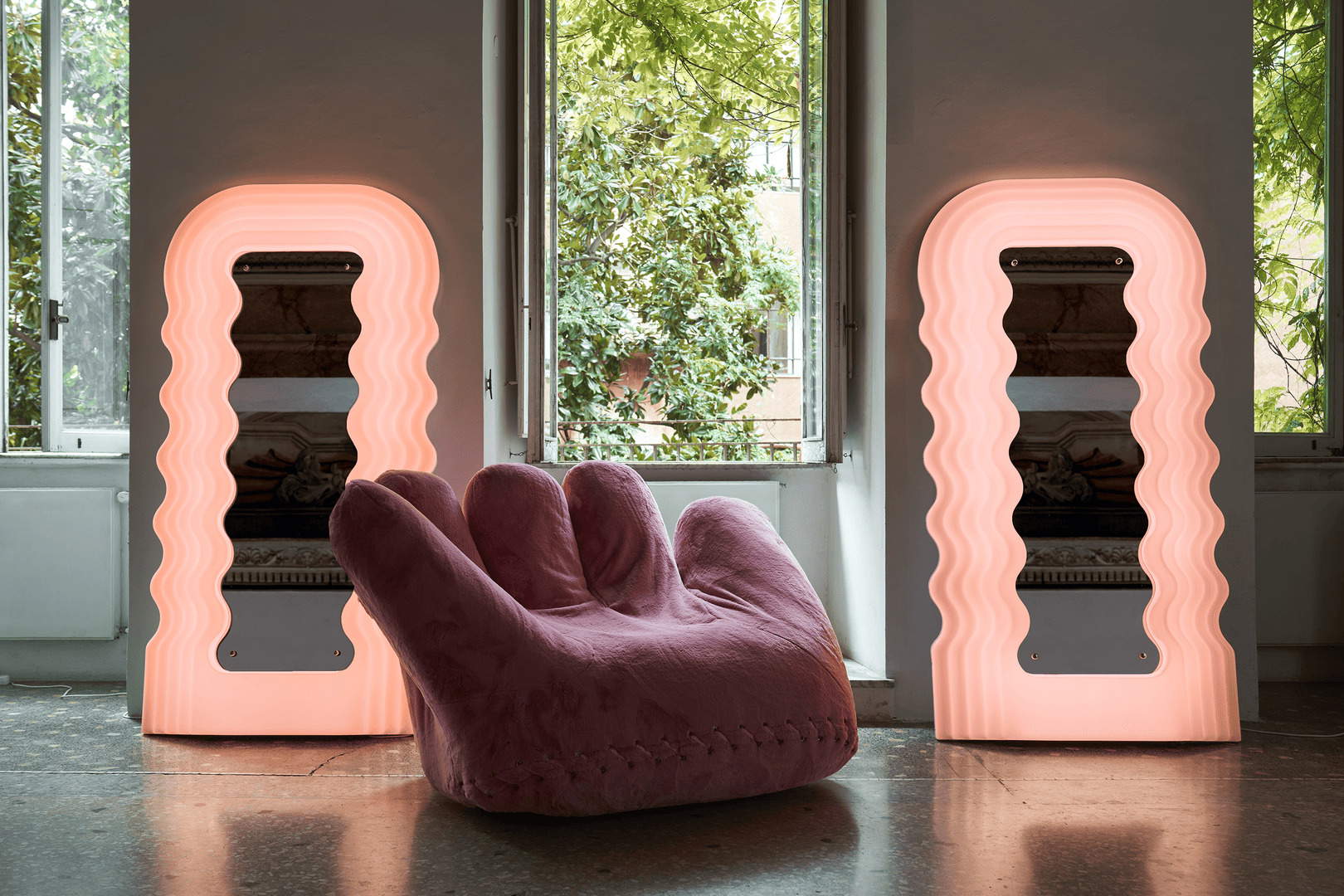
Ultrafragola belongs to the series of so-called ’gray furniture,’ a collection of living and sleeping area furniture designed for Poltronova. These pieces were exhibited at the famous exhibition Italy: The New Domestic Landscape at MoMA New York in 1972. The name comes from the color Sottsass had chosen for this furniture, gray, a color that for him represented neutrality and lack of emotion. By contrast, the designer had incorporated light within the structures of the objects, made of thermally molded fiberglass, to ’give life’ to his creations. None of the pieces were ever developed beyond the prototype, except for Ultrafragola, which saw the light of day in 1970 and as we know left an indelible mark in design history. The series of ’gray furniture’ represents a provocative manifesto with which the designer criticizes the predominant modernist movement of the time, assuming the role of defender of the new values emerging in theera of post-modernism.
Ettore Sottsass always sought to break with convention by creating objects that were an expression of an innovative and revolutionary aesthetic. Ironic, countercultural and provocative, he changed the history of Italian design forever. Ultrafragola is a brilliant example of how design can combine functionality and engaging emotionality. With its fluid form, striking lighting, and cultural appeal, it represents an icon of contemporary design that continues to inspire and fascinate. It is a mirror that makes us dream and reminds us that boldness and the courage to go against the grain can often lead us to make a difference by discovering, creating, and imagining new and revolutionary worlds.
Warning: the translation into English of the original Italian article was created using automatic tools. We undertake to review all articles, but we do not guarantee the total absence of inaccuracies in the translation due to the program. You can find the original by clicking on the ITA button. If you find any mistake,please contact us.